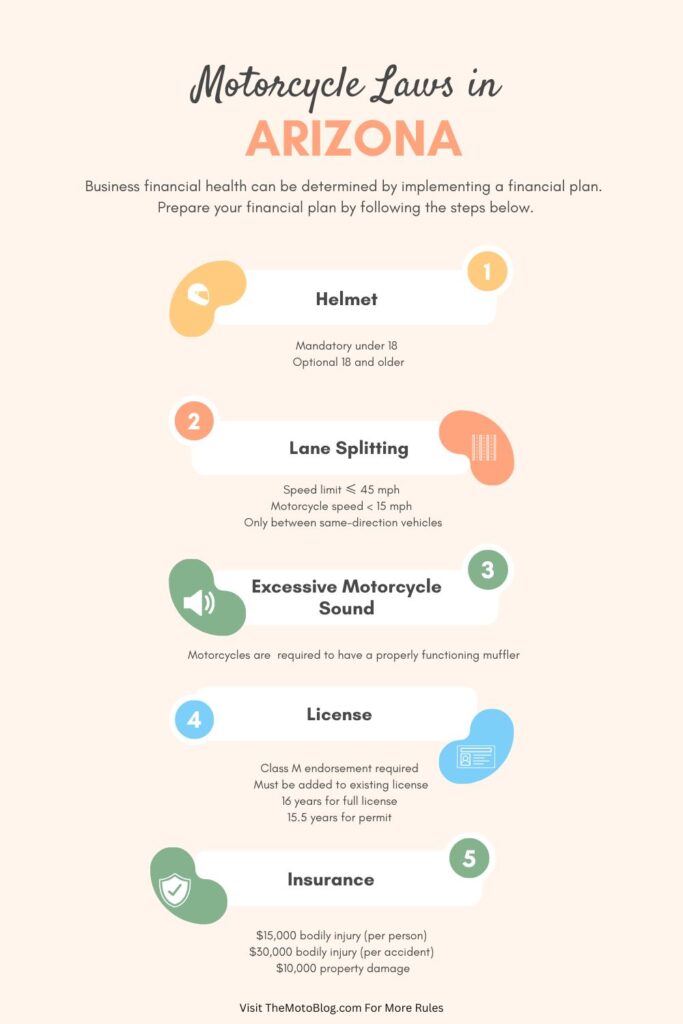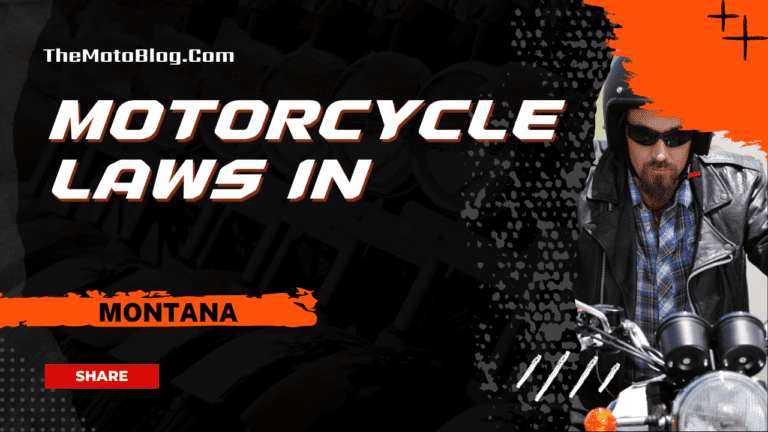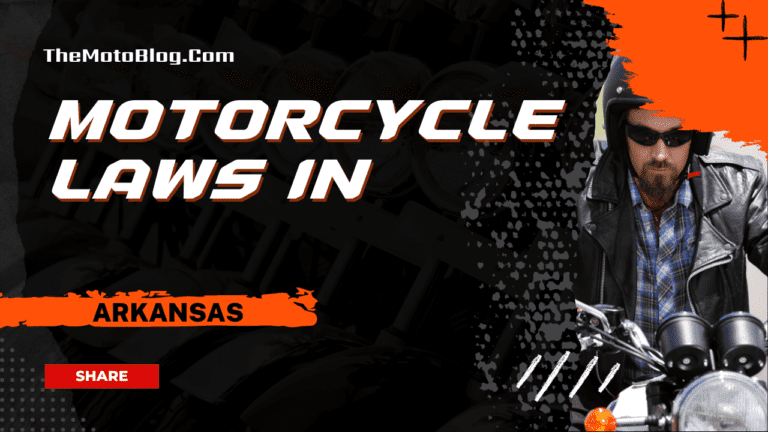Motorcycle Laws in Arizona
Before hitting Arizona’s scenic highways and desert roads, understanding the state’s motorcycle laws is crucial for both safety and legal compliance. While sharing borders with California, Nevada, Utah, and New Mexico, Arizona maintains its own distinct set of motorcycle regulations. These laws balance rider freedom with safety requirements, offering specific provisions for everything from licensing to equipment standards. Whether you’re a local rider or planning to cruise through the Grand Canyon State, knowing these regulations is essential for a safe and legal riding experience.

| Category | Requirements |
|---|---|
| Minimum Age | – 16 years for full license – 15.5 years for permit |
| License Type | – Class M endorsement required – Must be added to existing license |
| Helmet Requirements | – Mandatory under 18 – Optional 18 and older |
| Eye Protection | – Mandatory unless windshield equipped – Must meet safety standards |
| Insurance Coverage | – $15,000 bodily injury (per person) – $30,000 bodily injury (per accident) – $10,000 property damage |
| Lane Filtering Rules | – Speed limit ≤ 45 mph – Motorcycle speed < 15 mph – Only between same-direction vehicles |
| Equipment Requirements | – Rearview mirror – Headlight – Brake light – Muffler – DOT-approved helmet (if required) |
| Passenger Requirements | – Dedicated seat – Footrests – Handrails – No age restrictions |
| Permit Restrictions | – Valid for 7 months – Daytime riding only – No freeway riding |
| Documentation Needed | – Driver License application – Identity proof – Vision test (20/40 minimum) |
| Testing Requirements | – Motorcycle Operator test – MVD-approved education program – Physical skills test |
| Basic Operating Rules | – Full lane rights – Max two bikes side-by-side – Must follow posted speed limits |
| License Plate Rules | – Rear mounting required – Must be clearly visible |
| Violation Penalties | – First offense: $25-$75 (helmet) – Subsequent: $75+ |
Licensing Requirements
Class M License Requirements
To legally operate a motorcycle in Arizona, riders must obtain a Class M endorsement. The minimum age requirement is 16 years old, and riders must add this endorsement to their existing license for motorcycle operation. A Class D license with motorcycle endorsement permits operation of any non-commercial vehicle.
Age Restrictions and Testing
New riders must be at least 16 years old, and those under 18 must hold an instruction permit for 6 months. The licensing process includes:
- Passing the Motorcycle Operator test
- Completing an MVD-approved motorcycle driver education program
- Successfully completing a physical motorcycle skills test
Documentation Requirements
Applicants must provide:
- Driver License and Identification Card application
- Proof of identity
- Pass a vision test (20/40 or better in one eye)
Instructional Permits (MP License)
- Available from age 15 years and 6 months
- Valid for 7 months
- Restricted to daytime riding
- No freeway/interstate riding permitted
Safety Equipment Requirements
Helmet Laws
Arizona requires helmet use for riders under 18 years old, while it remains optional for riders 18 and older. All helmets must be DOT-approved and properly secured.
Protective Equipment
- Mandatory eye protection (glasses, goggles, or transparent face shield) unless the motorcycle has a windshield
- Equipment must meet state maintenance standards
Operating Rules and Regulations
Lane Usage
- Motorcycles have full lane rights
- Maximum two motorcycles can ride side by side
- Lane filtering is permitted under specific conditions:
- Speed limit must be 45 mph or less
- Motorcycle speed under 15 mph
- Only between vehicles moving in same direction
Equipment Requirements
All motorcycles must have:
- Rearview mirror
- Working headlight and brake light
- Properly functioning muffler
- Handlebars not exceeding shoulder height
Insurance and Registration
Minimum Coverage Requirements
Riders must maintain liability insurance of:
- $15,000 bodily injury per person
- $30,000 bodily injury per accident
- $10,000 property damage per accident
Registration Rules
License plates must be:
- Securely fastened to the rear
- Clearly visible at all times
Vehicle and Passenger Requirements
Motorcycle Equipment
- Proper seat and footrests for operator and passenger
- Functioning rearview mirror
- Compliant muffler system
- Working lights
Passenger Regulations
- Dedicated seat and footrests required
- Handrails mandatory
- No age restrictions for passengers
Enforcement and Penalties
Violation Fines
- Helmet violation (under 18): $25-$75 first offense
- Subsequent violations: $75 or more
Special Circumstances
Different regulations apply for off-road vehicle operation on private property, with specific agricultural use exemptions available.
Arizona’s motorcycle laws reflect a balanced approach to rider safety and freedom, with specific requirements tailored to the state’s unique riding conditions. When planning rides across state lines, remember that neighboring states like California and Nevada have their own distinct regulations. For instance, while California allows full lane splitting, Arizona permits lane filtering under specific conditions. Similarly, riders heading to Utah or New Mexico should familiarize themselves with local requirements, as regulations can vary significantly across state borders. By understanding and following these laws, riders can ensure a safe and enjoyable motorcycling experience while exploring Arizona’s diverse landscapes.
Motorcycle Laws in the US By States
If you liked this article, then please subscribe to our YouTube Channel for more Bike Videos. You can also find us on Instagram, Twitter and Facebook.
Disclosure: As an Amazon Associate, I earn from qualifying purchases. Read more about Amazon Affiliate Disclaimer.

Vishwanath Mathpati
I am Vishwanath Mathpati, a full-time Blogger and Motorcyclist from Bidar, Karnataka. I love writing about my Motorcycles Stories and Riding Gears on this blog.
Know More About Me.







